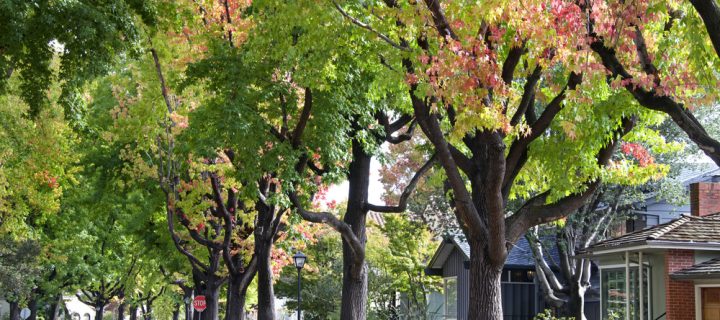Those around more nature do better developmentally.
The neighbors on the left want to take down the large oak tree on the front lawn to let in more light. Those on the right would prefer the leaves of their maples didn’t accumulate so readily on the driveway because raking leaves is time consuming and who wants to do that. Nature is annoying for many, it seems.
But the truth is, we need it, messy leaves and all. And not just to provide us with the bare minimum of oxygen required to keep us alive. (Although the oceans actually give us a lot of our O2, something that isn’t really talked about. But anyhow).
Nature is also needed to keep us smart. Here’s how.
Time in greenspace helps kids develop their minds
A study done at the University of British Columbia in Canada found the greener a child’s neighborhood is from the time they are born to the age of five, the higher their developmental scores.
“…what’s interesting is that those children living in a residential location with more vegetation and richer natural environments showed better overall development than their peers with less greenspace,” said the study’s author, Ingrid Jarvis. Jarvis is a PhD candidate in the department of forest and conservation sciences at UBC.
To come up with their findings, Jarvis and her team studied the developmental scores of 27,372 children living in Metro Vancouver. This group attended kindergarten in the area between 2005 and 2011. The green space around the children’s home was estimated for this time frame, as well as the surrounding levels of traffic, air pollution, and community noise.
Related: How to Get Your Vitamin D Levels Checked
Researchers used the Early Development Instrument (EDI) for their analysis. This is a survey completed by kindergarten teachers to measure how well a child is meeting age-appropriate developmental expectations.
Most children were found to be developing well. Those living amongst more vegetation and in “richer natural environments” were doing better, however. This group scored higher than those who lived with less green space.
But hold on. Should we take this information at face value? Do trees really matter?
Other factors that might have an effect
It might not simply be the presence of additional greenery that makes the difference. The other side could be argued. It could be said that people who live in greener neighborhoods in turn have more money. They may also, thus, have more access to a stable life, nannies, enriching after school activities, a balanced diet, and increased family time. There is a whole host of other things that could contribute to higher scores on tests.
All this being said, however, access to green space is still worth considering as an important element.
The researchers said they feel those kids surrounded by more nature are benefitting from its strengths. Nature has the ability to reduce the harm of air pollution and noise. This counts. These environmental disturbances have been shown to increase kids’ stress levels, cause disrupted sleep, and impact the central nervous system.
“More research is needed, but our findings suggest that urban planning efforts to increase greenspace in residential neighbourhoods and around schools are beneficial for early childhood development, with potential health benefits throughout life,” says the study’s senior author Matilda van den Bosch.
So, rake those leaves thankfully. Or, hire someone else to do it. They’re a good thing to have around. Surely that tween up the street needs some extra cash and probably spends too much time on TikTok and could use a little exercise. The trees are for the good of all.
photo credits: Sheila Fitzgerald/Shutterstock.com












